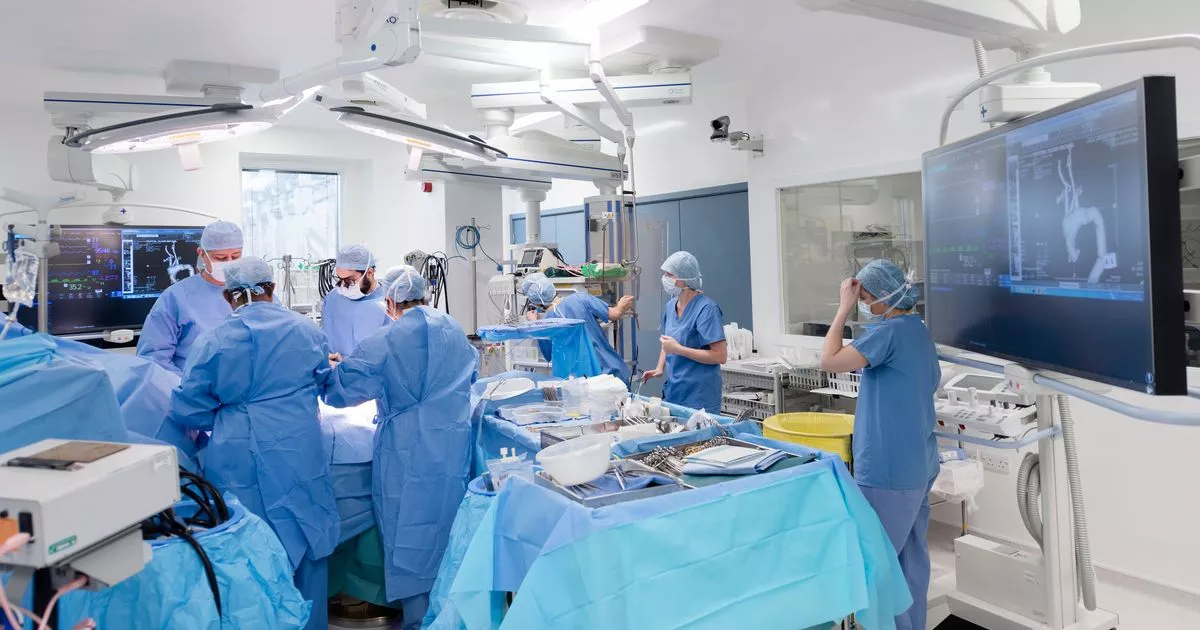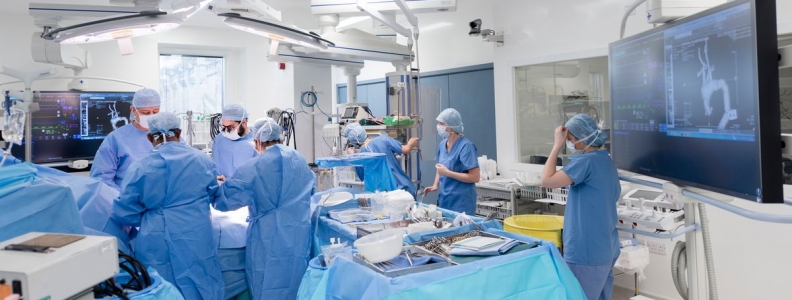Current UCD Medicine student Chloe Murphy explains what it is like to study surgery as part of her course
I consider myself extremely privileged that the first surgery I ever witnessed was a heart surgery. More specifically, a Coronary Artery Bypass Graft surgery. Otherwise known as CABG. Pronounced: cabbage. Like the vegetable.
Having started the rotation just a few days previously, I had barely even worked out who was on my team at this point. Everything was new and unfamiliar, and I had no idea how anything worked on a surgical ward. Luckily, a friendly SHO took me under his wing, and offered to let me observe.
The first challenge was finding the theater. My knowledge of the layout of the building at this point was based entirely on the signs in the elevator, which needless to say did not include the location of the theaters. Thankfully my friendly SHO was there to lead the way, and also showed me where to get scrubs and clogs. He left me with instructions on how to find the theater, and after changing, I headed over to meet my next challenge: finding the right door. To my dismay, I discovered that each theater had 3 normal sized doors and 2 large sliding doors. Not knowing what areas were sterile, I was left hovering in the corridor for several minutes before someone chanced upon me and brought me inside. My first view inside an operating theater!

By the time I arrived, the patient was already asleep and on the operating table. He was covered in large blue disposable sheets, exposed only where necessary. I remember the first half hour as only a blur of activity. The theater was large and spacious, but filled with people. Nurses, doctors, porters, all scurrying about the room, occupied by various tasks. Everyone wore the exact same blue scrubs, blue caps and blue face-masks, and it took me a while to find my friendly SHO in the crowd. I spent most of that first half hour just trying to stay out of the way!
For the first half of a CABG, the graft vessels must be harvested from other parts of the patient. Most commonly, grafts come from the saphenous vein (in the leg), radial artery (in the arm) and internal mammary artery (in the chest). The vessels are all removed at the same time, so multiple surgeons got to work on different areas of the body. From my position standing at the end of the table, I had a good view of this fascinating procedure.

For the second half of the surgery, the vessels are attached to the heart, allowing an alternative route of blood flow around blocked coronary arteries that supply blood to the heart. To do this, the heart must be stopped, and the patient must go on a heart-lung bypass machine. This machine oxygenates the blood and keeps it at an adequate temperature before pumping it around the body, while the surgeons operate on the heart. For this part of the surgery I was allowed to move closer to the table, and from this new position could see the entire operation, in all its intricate detail. Despite all the stereotypes I had heard, the surgeons were all lovely and took the time to explain to me what they were doing. As is standard, they took the opportunity to quiz me on my knowledge, and in my nervousness I forgot an embarrassing amount of basics!

By the end of the surgery, my back was aching from leaning over for so long, and I was starving having had just a small breakfast that morning. It was only then that I realised how much time had passed – I had been in theater for 6 hours! Despite the long hours, heart surgery was definitely a pretty cool surgery to observe – not everyone can see they’ve seen a live beating heart!




